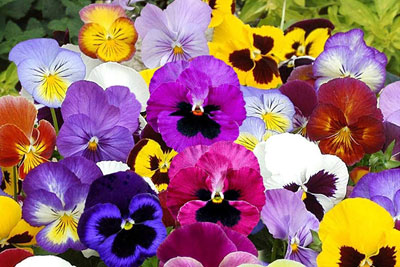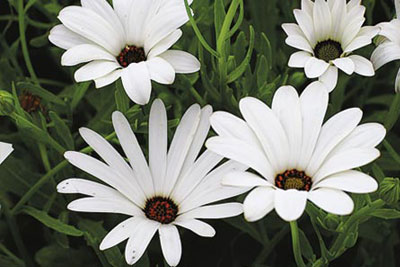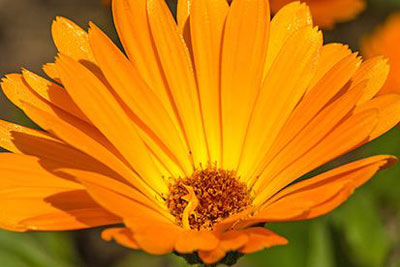The onset of winter season makes us all more of outdoor people. We love sitting and basking in the sunlight. This would become more pleasurable if our outdoor was more colorful and vibrant.
Flowers make your garden/balcony more colorful and vibrant. They enhance the fragrance in the space. Winter gives you a lot of choices of flowers in varied colors, shapes, sizes and textures. In fact the first of winter flowers start blooming in November- December and the maximum of blooms happen in February – March.
The small growers who want to grow the winter annuals in containers and keep them in their balconies, atriums, patios and roof tops should grow the regular hardy varities of flowers. All you need to do is to plant them where they can get a lot of sunshine.
When to plant
Planting activities for winter annuals start in September. If heavy rains continue, delay the sowing till the first week of October.
Where to sow
Sowing of winter annuals must be done in nursery beds or seed pans. What to sow (either seeds or cuttings) may differ from flower to flower. For instance, flowers like Sweet Peas and Nastasiums prefer direct sowing, while Dahlias, Chrysanthemums and Carnations can grow through cuttings.
To make sure the seedlings or cuttings are well spaced, place chicken wire over your seed pan/tray and plant them through the holes. This makes it easier to separate them for transplanting after 15-20 days. By that time, the seedlings or cuttings are established and are about 2-3 inches tall with 2-3 leaves. It is at this point that you should transplant them into pots.
Pinching:
Once the seedling is established for 15-20 days and after you see fresh leaves coming up, pinch the young plants. To do so, use your thumb and forefinger to nip out the growing tip of the main stem just above a pair of leaves. Pinching delays blooming but helps them to become stockier and bushier. Annuals like Alyssum, Phlox, Salvia and Antirrhinum benefit most from pinching.
Pots to grow them in
Transplant the young plants into pots that are at least 6 inches high. Pot sizes may vary from 6 to 12 inches (height) and your choice would depend on the size and type of plant. Dahlias and Carnations especially need to be re-potted in bigger pots because they grow taller. The rule of thumb to remember is to use pots that are 1-2 sizes larger than the plant. Staking would be necessary to provide support to tall annuals. Bamboo sticks fit in with garden plants better than metal stakes.
Preparing the soil
Annuals are not very fussy about soil and get by with reasonably good quality of soil. It is interesting to note that Nasturtium gives its best on poor soil. Prepare a soil mixture that is composed of one pot of loam clay, one part of farm manure, some leaf mould, neem khali (neem cake) and bone meal (powdered animal bones).
Soil should be reasonably fed with organic manure but avoid overfeeding as annuals don’t like too much manure even when they are well aged. Too much nitrogen results in plants with too many leaves, stems and too few flowers. The best manure for winter annuals is dried leaf mould or well rotten, old farm manure.
Choosing the right location
A sunny location with effective drainage is more important to most annuals than soil quality. Place them in an open and sunny area; exceptions to this are such flowers as Cineraria, Salvia, Petunia and Larkspur who don’t mind semi-shades. All winter annuals need at least 5 hours of direct sunlight daily.
Watering the soil
More frequent watering is required as roots are not generally deep with the exception of Sweet Peas whose roots are deep. A word of caution here – water evaporation reduces in winter since the days are shorter, so be watchful of over watering. Water as per the need of the plant and size of the pot. Smaller pots need more frequent watering than bigger pots. Ensure that the dranaige hole is open and the soil mixture is porous and light so that water does not stagnate.Always check the soil of the pot before watering,if it is dry only then water.
Caring for the plants
During the growing period, hoe the soil regularly to loosen it. Keep a close watch on aphides and pests. Nuvan is a safe bet for spraying.Nuwan is available in most garden centers.Also keep removing the dead and dry leaves and stems and keep the plants clean and airy.
(IN A BOX)
Types
Varieties that look the best for window boxes are Petunias, marigold, Verbena, Alyssum. Some commonly grown varieties for pots are.
Pls include these also in the box below: dahlia, carnation, sweet peas
| Type | Height and Time taken for blooming | Colours, form of bloom | Pot size in inches |
|---|---|---|---|
|
Alyssum – very fragrant |
H:10-15 cm T : 6-8 weeks |
White, Lilac |
6 -8 |
|
Antirrhinum- also known as dog flower or snap dragon |
H : 15 cms -22 cm Dwarf variety T : 14-16 weeks |
Various colors. Also single and bicolor |
8-10 |
|
Aster- susceptible to heavy rains and frost |
H : 20 -25 cm T : 12 weeks |
Various colors- single and double hybrid varieties. |
6-10 |
|
Calendula- popular for rich color, mass effect, long flowering period and very hardy |
H : 25-30 cm T :8-10 weeks |
Orange, yellow, single and double |
8-10 |
|
Cinneraria- likes semi shade |
H : 35-45 cm T : 10 -12 weeks |
Bright shades of blue and magenta. Also in bicolor |
8 -10 |
|
Dimorphotheca[ flowers open with sunlight and close with sunset |
H : 30 -40 cms T :10-12 weeks |
Glistening white. Shades of orange and yellow |
8-10 |
|
Gerbera. Propagation by root devision |
H : 25 – 30 cms |
Shades of pink rose. Single or double |
8-10 |
|
Mari Gold. Easy to grow. Have French and African varieties. |
French H : 15-20 cms T : 8-12 weeks |
Yellow/ orange. Single or double |
8-10 |
|
Mesembryanthemum also known as ice plant and living stone daisy flowers. Closes in the evening |
H : 10- 15 cms T : 12 weeks |
Magenta, yellow and white |
6-8 |
|
Nasturtium. Loves poor soil and no transplanting. Needs regular defoliation |
H: 20-30 cms T : 10-12 weeks |
Yellow, orange and maroon |
8-10 |
|
Petunia. Single or double varieties. Grown from cutting also |
H : 22-45 cms T : 16-20 weeks |
Multicolor in single shades. Also available in bi colors too |
8- 10 |




